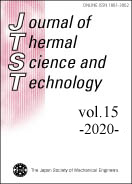Volume 15, Issue 1
Displaying 1-12 of 12 articles from this issue
- |<
- <
- 1
- >
- >|
Papers
-
2020Volume 15Issue 1 Pages JTST0001
Published: 2020
Released on J-STAGE: January 01, 2020
Download PDF (6725K) -
2020Volume 15Issue 1 Pages JTST0002
Published: 2020
Released on J-STAGE: January 18, 2020
Download PDF (2347K) -
2020Volume 15Issue 1 Pages JTST0003
Published: 2020
Released on J-STAGE: February 13, 2020
Download PDF (1727K) -
2020Volume 15Issue 1 Pages JTST0004
Published: 2020
Released on J-STAGE: February 28, 2020
Download PDF (1836K) -
2020Volume 15Issue 1 Pages JTST0005
Published: 2020
Released on J-STAGE: February 29, 2020
Download PDF (1899K) -
2020Volume 15Issue 1 Pages JTST0006
Published: 2020
Released on J-STAGE: March 25, 2020
Download PDF (1858K) -
2020Volume 15Issue 1 Pages JTST0007
Published: 2020
Released on J-STAGE: April 10, 2020
Download PDF (2389K) -
2020Volume 15Issue 1 Pages JTST0008
Published: 2020
Released on J-STAGE: April 21, 2020
Download PDF (3325K) -
2020Volume 15Issue 1 Pages JTST0009
Published: 2020
Released on J-STAGE: May 20, 2020
Download PDF (2527K) -
2020Volume 15Issue 1 Pages JTST0010
Published: 2020
Released on J-STAGE: June 10, 2020
Download PDF (2127K) -
2020Volume 15Issue 1 Pages JTST0011
Published: 2020
Released on J-STAGE: June 19, 2020
Download PDF (5706K) -
2020Volume 15Issue 1 Pages JTST0012
Published: 2020
Released on J-STAGE: June 25, 2020
Download PDF (1524K)
- |<
- <
- 1
- >
- >|
